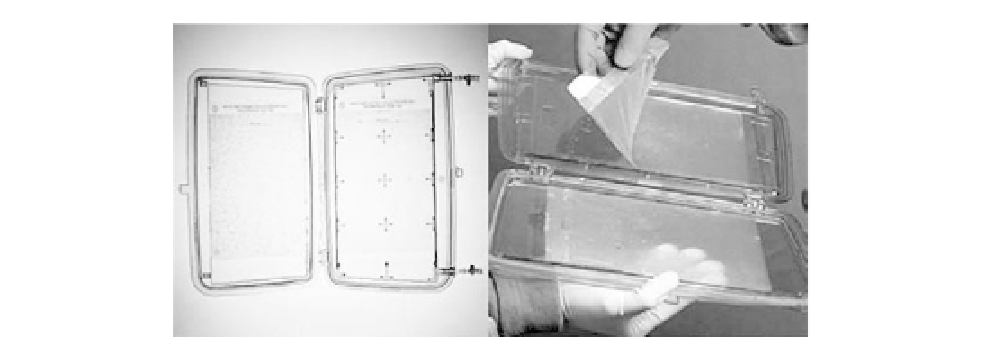Biomedical Engineering Reference
In-Depth Information
FIGURE 6.5
Advanced Tissue Sciences bioreactor for culture of their skin product, Trancyte, derived from
human foreskins.
extensive testing, processing, and quality control that is required for such allogeneic products
are a significant barrier to adoption for procedures for which effective therapies already exist.
However, these products have introduced tissue engineering technologies to the clinic and
have paved the way for future products.
Pancreatic
b
-Cells
Insulin-dependent diabetes mellitus is characterized by the inability of the pancreas to
produce and secrete insulin, a hormone required for normal glucose metabolism. Pancreata
derived from cadaveric donors can be used as sources of islets of Langerhans, which
contain the insulin-secreting
-islet cells. These cells can be injected into the portal vein
leading to the liver, where they lodge and secrete life-sustaining insulin. Unfortunately,
at present it is not possible to expand the number of
b
-cells in culture without losing their
essential properties, and thus this procedure is constrained by the severely limited supply
of tissue. However, recently there has been exciting progress in the derivation of insulin-
secreting
b
-cells from stem cells. This form of cellular therapy is an allogeneic transplan-
tation procedure, and the duration of the graft can be prolonged by immunosuppressing
the recipient.
The immune rejection problem is an important concern in cellular therapies and is
treated in a separate section following. However, ways to overcome rejection include the
physical separation of the donor's cells from the immune system by a method that allows
exchange between the graft and the host across a semipermeable membrane (Figure 6.6).
This approach is the basis for many of the encapsulation strategies that have been used to
improve the efficacy of islet transplantation. In addition, there have been many efforts to
develop “artificial pancreas” devices that allow cells to secrete insulin while being protected
from the host's immune system.
b
Cartilage and Chondrocytes
Cartilage is an unusual tissue in that it is avascular, alymphatic, and aneural. It consists
mostly of extracellular matrix in which
chondrocytes
are dispersed at low densities on the
order of 1 million cells/cc (whereas most tissues contain several hundred million cells/cc).

